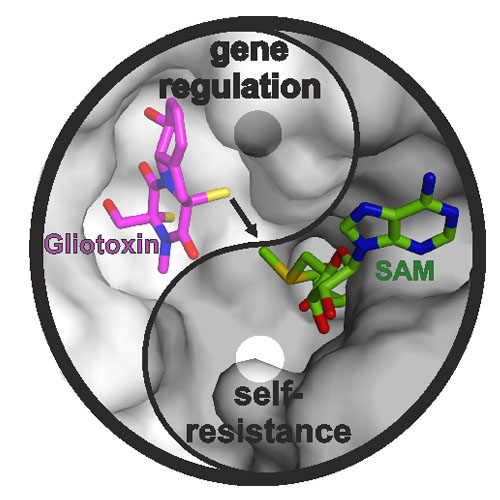Sequential Inactivation of Gliotoxin by the S-Methyltransferase TmtA
25-Jan-2016
ACS Chem. Biol., 2016, 11 (4), pp 1082–1089, DOI: 10.1021/acschembio.5b00905
ACS Chem. Biol., online article
The epipolythiodioxopiperazine (ETP) gliotoxin mediates toxicity via its reactive thiol groups and thereby contributes to virulence of the human pathogenic fungus Aspergillus fumigatus. Self-intoxication of the mold is prevented either by reversible oxidation of reduced gliotoxin or by irreversible conversion to bis(methylthio)gliotoxin. The latter is produced by the S-methyltransferase TmtA and attenuates ETP biosynthesis. Here, we report the crystal structure of TmtA in complex with S-(5′-adenosyl)-l-homocysteine. TmtA features one substrate and one cofactor binding pocket per protein, and thus, bis-thiomethylation of gliotoxin occurs sequentially. Molecular docking of substrates and products into the active site of TmtA reveals that gliotoxin forms specific interactions with the protein surroundings, and free energy calculations indicate that methylation of the C10a-SH group precedes alkylation of the C3-SH site. Altogether, TmtA is well suited to selectively convert gliotoxin and to control its biosynthesis, suggesting that homologous enzymes serve to regulate the production of their toxic natural sulfur compounds in a similar manner.











